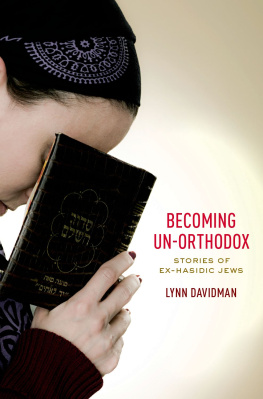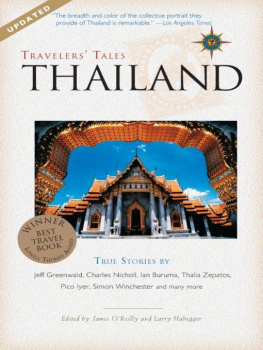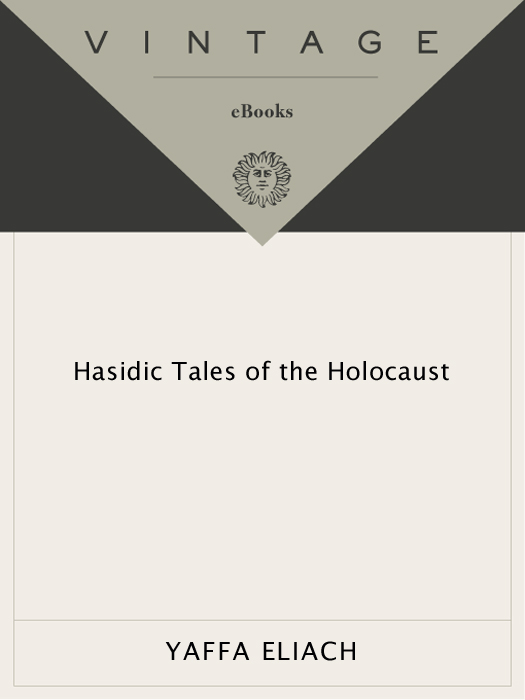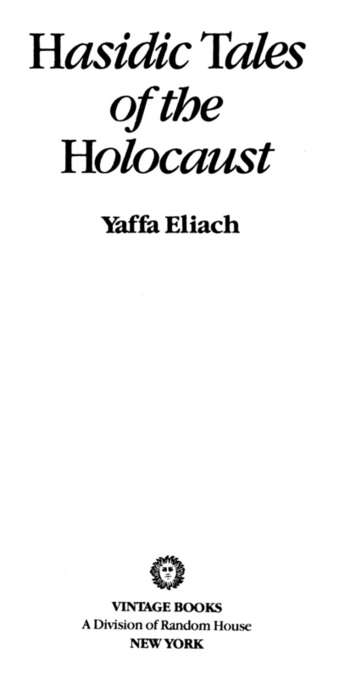Also by Yaffa Eliach
There Once Was a World:
A 900-Year Chronicle of the Shtetl of Eishyshok
FIRST VINTAGE BOOKS EDITION, OCTOBER 1988
Copyright 1982 by Yaffa Eliach
All rights reserved under International and Pan-American Copyright Conventions. Published in the United States by Random House, Inc., New York. Originally published, in hardcover, by Oxford University Press, New York, in 1982.
Library of Congress Cataloging-in-Publication Data
Hasidic tales of the Holocaust.
Reprint. Originally published: New York: Oxford
University Press, 1982.
1. Holocaust, Jewish (19391945) Personal narratives.
2. Hasidim Biography 3. Hasidim Legends. I. Eliach, Yaffa.
D804.3.H37 1988 940.53 1503924 88-40179
eISBN: 978-0-307-79449-9
v3.1
When Pharaoh restored the chief butler to his position as foretold by Joseph in his interpretation of the butlers dream, he forgot Joseph. Yet did not the chief butler remember Joseph, but forgot him (Genesis 40:23). Why does the Bible use this repetitive language? It is obvious that if the butler forgot Joseph, he did not remember him. Yet, both verbs are used, remembering and forgetting. The Bible, in using this language, is teaching us a very important lesson, said the Rabbi of Bluzhov, Rabbi Israel Spira, to his Hasidim. There are events of such overbearing magnitude that one ought not to remember them all the time, but one must not forget them either. Such an event is the Holocaust.
The Rabbi of Bluzhov, Rabbi Israel Spira
For David
and our children Yotav and Smadar
Contents
ONE
ANCESTORS AND FAITH
TWO
FRIENDSHIP
THREE
THE SPIRIT ALONE
FOUR
AT THE GATES OF FREEDOM
Acknowledgments
SOME BOOKS ARE BORN IN SOLITUDE, OTHERS AMONG PEOPLE. THIS book resulted from an ongoing dialogue and exchange of ideas with many people. I would like to acknowledge a few among the many: My students at Brooklyn College, for their enthusiasm and interviews; the many Holocaust survivors who were willing to share the accounts of their most painful and lonely years; the Rebbetzin Bronia Spira for her advice, moral courage, and marvelous tales; Dina Spira and Baruch Singer for their time and their dedication to Hasidic stories; Oscar Rosenthal and Harold Zlotnik for their advice at the very initial stages of the book; the City University of New York, PSC-BHE Research Award Program, for funding the first stage of the project; Mollie Fried for typing parts of the manuscript; Uri Assaf for his advice since the inception of the book; Bonnie Gurewitsch for reading the manuscript as it was written and offering many linguistic suggestions; Miriam Hurewitz for doing the copy-editing with such thoroughness and care; Beth Rashbaum for making it a labor of love and for her genuine interest in the material and her perceptive insight, which greatly enhanced this book; my children, Yotav and Smadar, for their moral support, offered with good humor; and most of all my husband, David, my teacher and friend, for his patience, wisdom, and knowledge. You all made this book possible. Needless to say, its shortcomings are all mine.
Foreword
HASIDISM, A POPULAR JEWISH REVIVALIST-PIETISTIC MOVEMENT , made its appearance during the first half of the eighteenth century in Podolia and Volhynia, in the Ukraine. It emerged in the aftermath of the Cossack Bogdan Chmielnickis massacres in the previous century; the disillusionment with the false Messiah Sabbetai Zevi, who had proclaimed that the year 1666 would be the millennium; and with the decline of Jewish institutions, chiefly the Council of the Four Lands, the central organization of Jewish autonomous life in Eastern Europe.
Hasidism was founded by Israel ben Eliezer, the Baal Shem Tov (17001760), Master of the Good Name, who recognized the need for new patterns of life, leadership, and literature to revitalize the Jewish community of Eastern Europe.
The new movement reshuffled the existing scale of values within the Jewish community. It placed prayer, ecstasy, storytelling, and sanctification of daily life on a par with Talmudic studies. The merit of scholarship was no longer to be the only major avenue to communion and closeness with God.
The new patterns of leadership, likewise, were no longer based solely on scholastic achievements. Charismatic individuals became leaders in various locales in Poland and the Ukraine. Hasidism eventually evolved into a leader-devotee relationship, where allegiance to a leader (zaddik) was established and handed down from generation to generation, giving rise to dynasties of zaddikim and their Hasidic followers. The various sects were always named after places in Eastern Europe (and later in other countries) which were associated with crucial events in the zaddiks life; the name could be that of the zaddiks birthplace, or it could be where he established his court or where he died. By the turn of the eighteenth century, Hasidism had grown from a minority group facing strong opposition, particularly from the Lithuanian scholarly community, to a wide-ranging popular movement. Eventually, it was to become one of the major movements in Eastern Europe, with a strong following in the Jewish communities of the Austro-Hungarian Empire.
One of the movements most important contributions was its literature, particularly the tales and anecdotes. The main themes of Hasidic tales are love of humanity, optimism, and a boundless belief in God and the goodness of mankind. The typical Hasidic tale is characterized by a unique blend of folkish elements and sophisticated wit. The first collection of Hasidic tales, Shivhei-ha Besht (In Praise of the Baal Shem Tov), consisted of anecdotes about the life of the founder, and was published in 1814. A year later Sippuri Maasiyyot, by Rabbi Nachman of Bratslav (17721811), the great-grandson of the Baal Shem Tov, was published posthumously. These thirteen stories, which first appeared in a bilingual edition of Yiddish and Hebrew, are among the classic masterpieces of Hasidic literature. Their allegorical themes are a continuing source of inspiration and scholarly research. These first collections were followed by an outpouring of anthologies of Hasidic tales, most of them focusing on the lives of the early masters and their devoted Hasidim. Since most of the tales were written in Yiddish, which was the vernacular, as opposed to Hebrew, the language of scholarship, they attracted many women to Hasidism and made Hasidic tales best sellers of their time.
Since its emergence as a prominent literary genre, the Hasidic tale has stimulated and inspired many distinguished men of letters such as Franz Kafka, I. L. Peretz, Martin Buber, and S. Y. Agnon (Israels Nobel Laureate in Literature), and countless others less well known who have also found in the Hasidic tale a traditional and a thematic content which suited their particular philosophy, world outlook, and temperament. Peretz imposed on the Hasidic folktales and material that he collected his own aesthetic imprint. He discovered in the tales an expression of moral beauty and grandeur, and a deep mystical truth in the lives of the poor and the simple. Like Peretz, Buber, one of the pioneers in bringing Hasidic literature to the world at large, was deeply moved by the religious message of Hasidism, and he considered it his duty to convey that message to the world. His fascination with Hasidic literature was to last a lifetime. In 1906, Buber attempted to translate the tales of Rabbi Nachman into German, but later decided to retell them in German in a free adaptation; in 1908 he translated the









